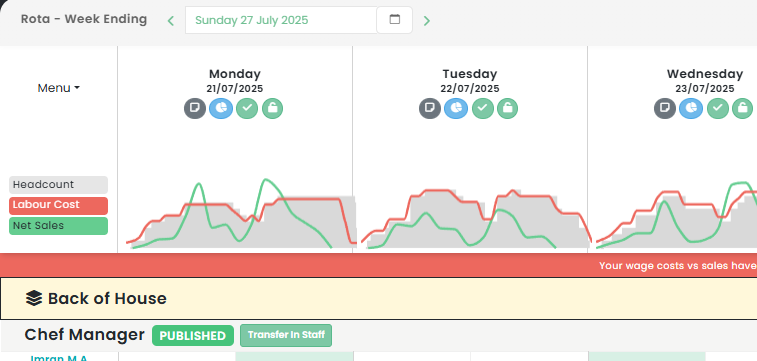Unlocking the Secrets to Average Restaurant Profit Percentage: A Comprehensive Guide to Boosting Income in the Restaurant Industry
Stay informed with industry news, tips, and practical guides for hospitality professionals.
Average Restaurant Profit Percentage in the UK Hospitality Industry
The restaurant industry is a key pillar in the UK's vibrant hospitality industry. However, it's not a secret that restaurant profitability can be a tough nut to crack. The profit margin for most restaurants is thin; hence the need for adept restaurant management and understanding of the restaurant business model. This article will explore the average restaurant profit percentage, how to improve your restaurant's profits, and the importance of financial management in restaurants.
Understanding the Restaurant Profit Percentage
The average restaurant profit percentage can be defined as the net income of a restaurant as a ratio of its total revenue. It is an essential indicator of a restaurant's income and can help owners and managers understand their business's financial health. While the average profit margin differs significantly across various types of restaurants, most establishments in the UK tend to have an average restaurant profit percentage ranging from 3% to 5%.
Financial Management in Restaurants
Effective financial management in restaurants is pivotal for the success of the restaurant business. It goes beyond the daily tracking of sales and expenses. It encompasses strategic planning, financial analysis, and the making of long-term investment decisions that can enhance a restaurant's profitability. For a successful restaurant business, management must keep an eye on the restaurant's profit and loss statement as it provides a snapshot of the costs, revenues, and the overall profitability of the restaurant.
Improving Restaurant Profits
Improving restaurant profits is not always about increasing sales. It is also about finding ways to reduce costs without compromising the quality of service or food. Techniques to improve restaurant profit margins include menu engineering, portion control, reducing food waste, and effective staff management. Additionally, adopting technology can streamline operations and reduce costs, thereby improving the restaurant's overall profitability.
The Restaurant Business Model
At the heart of any successful restaurant business is a robust business model. This model includes a unique value proposition, efficient operation processes, a solid customer base, and a sustainable revenue stream. A well-structured business model can help a restaurant achieve its objectives, bolster its market position, and ultimately increase its profit margin.
Concluding Thoughts
While understanding the average restaurant profit percentage is crucial for anyone in the restaurant business, it is equally important to understand that profits are the result of effective management and the successful implementation of a robust business model. By focusing on improving service quality, reducing costs, and driving customer satisfaction, restaurants can enhance their profitability and ensure long-term success in the competitive UK hospitality industry.
In the hospitality industry, the restaurant industry is a sector where profit margins are notoriously slim. Therefore, it is crucial to have effective restaurant management in place to help ensure the maximum restaurant income possible. With the right strategies and understanding of the restaurant business model, it is possible to run a successful restaurant business with healthy profit margins.
Ready to simplify hospitality ops?
We’ve got you.
Speak with an Opsyte expert to see how we help:
- Save hours on staff scheduling and rota planning
- Automate invoice processing and financial insights
- Track live labour costs vs sales in real-time
- Get fast answers and support from real humans
- Automate your P&Ls

“Opsyte transformed our entire back office. Game changer.”
Read articles from our hospitality experts
-
Boosting Guest Satisfaction: Effective Strategies for Enhancing Customer Experience in the Hospitality Industry
Enhancing Customer Experience in the UK Hospitality IndustryUnderstanding and improving the Customer Experience is pivotal in shaping the success of the UK's Hospitality Industry. With consumers' expectations constantly evolving, businesses…...
-
Maximising Customer Satisfaction: Comprehending and Implementing QSR Standards in the Quick Service Restaurant Industry
Understanding QSR Standards in the UK Hospitality IndustryQuick Service Restaurants (QSRs), colloquially known as fast-food outlets, have become vital components of the UK's hospitality industry. They offer a convenient, affordable…...
-
Revolutionizing the Nightlife: Innovative and Profitable Bar Business Ideas for the Hospitality Industry
Ideas for Bar Business: Fostering Success in the UK Hospitality IndustryThe UK hospitality industry is a vibrant and dynamic sector, offering an array of opportunities for bar entrepreneurship. A successful…...
-
Minimising Food Waste in Restaurants: A Comprehensive Guide to Sustainable Practices in the Hospitality Industry
How to Reduce Food Waste in Restaurants: A Guide to SustainabilityThe hospitality industry plays a significant role in the global sustainability mission, especially concerning food waste management. By focusing on…...
-
Maximising Your Profit Margin: Essential Tips for Restaurant Management and Operation for Financial Success in the Food Service Industry
Running a Profitable Restaurant: Strategies for Success in the UK Hospitality IndustryIn the dynamic UK hospitality scene, running a successful restaurant business is both an art and a science. It…...
-
Leveraging Catering Software for Efficient Event Management in the Hospitality Industry: A Comprehensive Guide to Optimizing Event Catering, Online Booking, and Food Service with Advanced Catering Tools and Solutions
Revolutionising the Hospitality Industry with Catering SoftwareIn today's rapidly evolving digital landscape, the hospitality industry is not left behind. The integration of technology, notably catering software, is transforming the way…...
